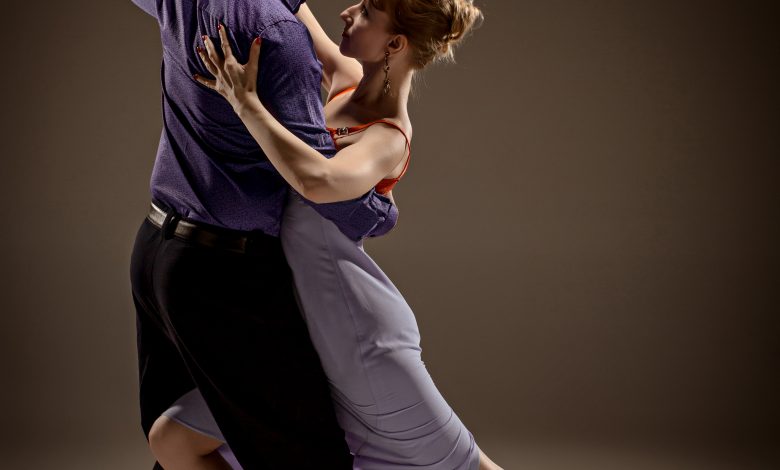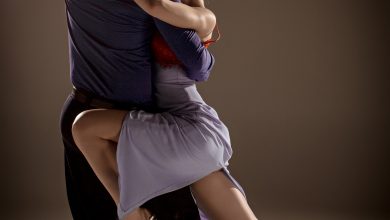Argentine Tango Steps
The Keys to Leading and Following in Argentine Tango

Leading and following is more than just mechanics. There are a number of additional skills need to be a competent leader or follower:
- Awareness of your surroundings. On a crowded dance floor, bumping into people can results in dancers getting annoyed or worse hurt. This risk is heightened by the fact that dancers tend to be taught sequences of steps in classes that have lots of space. As a result, dancers are often taught to take big steps and make quick steps without too much regard for anything around you. This is compounded by little focus on teaching floor craft. This is a recipe for frustration and disaster on a crowded milonga dance floor. On the tango dance floor, it helps to keep your head up so you can more easily navigate the dance floor and avoid other couples. If you’re leading, lead figures that turn a lot so that both of you get a wider view of those near you. If you’re following, be ready to resist the leader if they try to lead you into danger. A smart leader will appreciate your help.
- Awareness of your partner. It’s obvious why followers must have this ability, but it’s equally important for leaders. You must know where the follower is before you can get her to where you want her, and you must notice where she deviates from the path you’re shaping for her so that you can get her back into that path. The best follower in the world isn’t perfect, nor will you ever be a perfect leader, and there are plenty of distractions on even a lightly crowded dance floor.
- At the beginning of a dance before you start moving (and at any pauses during the dance), focus on the places where you touch your partner. Focus on your balance and stance and how they are impacted by how you connect with your partner. Readjust your arms and hands and body to improve the connection. If you feel comfortable doing so, make your readjustment a subtle caress or squeeze. This heightens your own and your partner’s awareness of your emotional and physical connection.
- For the leader, it’s important that you know what you want the follower to do. This allows you to better communicate your lead in a variety of ways. This will provide the follower with confidence and make her move more surely, and in the specific ways that the leader desires. To improve this skill, always pay attention when the follower is taught their part.
- For the follower, it’s essential that you do not know what the leader wants you do so that you do not anticipate. Focus on your connection with the leader, on your balance, and on staying over the balls of your feet. This will help keep your attention away from thinking about where and how you will move. For the same reason, focus on the music, especially the underlying beat. Try to step on the beats when you move, but resist very slightly being moved. This will stimulate your partner to be more definite in his leading as well as physically tightening your connection to him. Try to remain alert but relaxed.
High quality leading and following is predominantly achieved as a result of the clear movement of the upper body and chest. The arms and hands should be thought of just as extensions of the upper body the majority of the time.
Though the leader’s upper body does most of the work of leading, it can be helped by the leader’s right hand (placed under the follower’s shoulder blades approximately centered on the spine).



